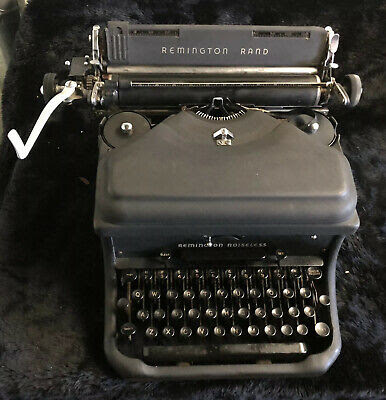Searching for a path..
... is almost always a fruitful thing to do. It's especially wonderful when you're exploring, trying to connect different pieces of your world together. That's what we're trying to do with this little Challenge: Connect different pieces together.
Recall the two Challenges: |
| Tuzigoot site, near Cottonwood, AZ |
1. Just outside of Cottonwood is an ancient pueblo site called Tuzigoot. The pueblo was built by the Sinagua people between 1125 and 1400 CE and is the largest and best preserved of the many Sinagua pueblo ruins in the Verde Valley. The name comes from ″Tú Digiz/Tuzigoot″ a Tonto Apache term for "crooked waters," so named for a nearby bent lake formed by a meander of the nearby Verde River.
Tuzigoot is a wonderful place to wander and explore, but I wonder if it's possible to hike from the Tuzigoot Visitor Center to the end-of-the-road parking lot near the campground on Flycatcher Road (34.7627216,-112.0217716). Obviously, I could walk alongside the roads from one point to the other, but is there a decent trail that connects the two points? How long is that trail?
First, I looked on Google Maps, just to (literally) get the lay of the land. Here's what I see on the Map in satellite view:
The red pin is the parking lot, and you can see the blue pin which is the Tuzigoot Visitor Center. Just by inspection, it looks like you can walk directly up the dirt road (Tavasci Marsh Road) and then cross over land to Tuzigoot Road. But CAN you actually make it overland? If you zoom in, you can see it's just about 1 football field in distance:
But even zooming in, I can't quite tell if there's a trail there.
So I did a query to find out! I was hoping to find a page that talked about the Tasasci Marsh road (which now seems quite abandoned) and perhaps connecting to Tuzigoot Road.
[ Tavasci marsh trail ]
Sure enough, I found a page at National Geographic webpage that talks about hikes to go birding near Tuzigoot, and this page specifically tells us that you can get from Tuzigoot to Dead Horse Ranch (which is just south of the parking lot).
There's also a link to the Tavasci Marsh and Tuzigoot trail at AllTrails.com which shows exactly the route we'd want to take to hike from the parking lot at (34.7627216,-112.0217716) to the monument.

Tavasci Marsh / Tuzigoot Trail (credit: AllTrails.com)
2. In the Sierras of California, there's a wonderful place to go for a long hike or backpack trip: Evolution Valley.
It's an easy place to visit (although taking a few days to wander there is definitely the way to go). But I wonder how difficult that hike would be. Can you find an elevation profile of the trail from Florence Lake to Evolution Valley? What's the maximum altitude you would reach while hiking on the obvious trail from the lake to the valley?
Now that we've seen that looking for a trail by name seems to work well, I did the query:
[ trail Florence Lake to Evolution Valley ]
Sure enough, that brings up a good set of results, including another trail on AllTrails.com. As it turns out, that page even has the vertical profile of the trail! (I didn't know that before I started this Challenge.) Here, I've picked the highest point on the trail (9700 feet)
 |
| Map (with vertical profile) of the trail from Florence Lake to Evolution Valley. Credit: AllTrails.com |
As Regular SRS Readers might recall, we discussed creating vertical profiles in an earlier post on SRS. In the post "When will the sun hit the beach?" I pointed out that you can use Google Earth to create an arbitrary path on a map, and then ask for the vertical profile. In this case, I quickly sketched in the trail from Florence Lake to Evolution Valley, and then asked for Google Earth to create the vertical profile. This is what I got when I did that:
 |
| The trail from Florence Lake to Evolution Valley as seen on Google Earth (the app). |
In this trail vertical profile, I've selected the highest point (9970 feet), which is slightly higher than the AllTrails elevation. That could be due to actual differences in measurement (but I'm willing to bet that I didn't select the trail very carefully while sketching out the path, and I might have gone off-trail a bit... that's probably also why my Google Earth trail is a bit shorter than the AllTrails path--they took more time to map it out in high-resolution).
In any case, the trail goes fairly high (9700 feet is 2956 meters), but I will tell you--it's a truly wonderful place to visit. For more great pictures of the place, check out this gallery of Evolution Valley on Google Images. (If you go: Beware of mosquitos in the summertime!)
SearchResearch Lessons
1. To find a trail from location X to Y, search for [ trail X to Y ]. Amazingly, if there's a trail (and sometimes if there's not a trail, but you can bushwhack from X to Y), someone will have written about it. These pages are invaluable knowledge! Check them out before going on that hike.
2. To get a vertical profile (or max elevation), you need something else--a tool to help figure it out. There are lots of tools to do so, but the easiest one to use (in my opinion) is Google Earth. Draw the path you want to hike, and then click the "Elevation Profile" tool to create your own detailed map.
3. Always check for ground truth by looking at the satellite imagery. You know how to do this... now get out and enjoy the summer!
Search on!


















